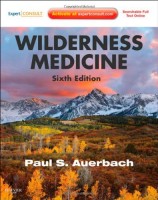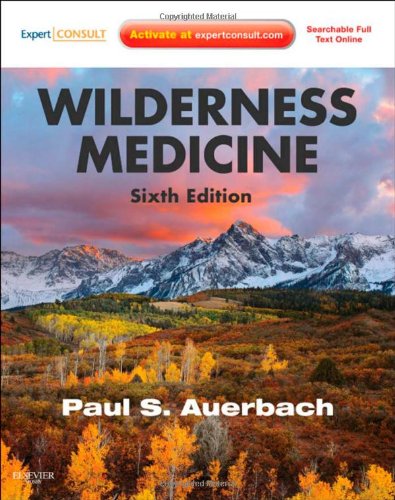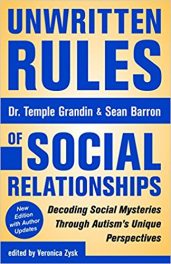 Editor: Paul S. Auerbach, MD, MS, FACEP, FAWM
Editor: Paul S. Auerbach, MD, MS, FACEP, FAWM
Publisher: Elsevier Mosby – 2,277 pages
Book Review by: Nano Khilnani
Wilderness Medicine is a relatively new field with probably not many practitioners. Many medical specialists in other fields handle emergencies and non-emergency situations that occur in various wilderness or outdoor settings on land, air, and sea. Some of these specialties are: cardiovascular medicine, dermatology, emergency and trauma medicine, environmental medicine, infectious disease medicine, mountain medicine, orthopedics, pulmonary medicine, and tropical medicine.
Dr. David R. Shlim, a practitioner in wilderness medicine, who wrote the Foreword to this book and is author of Medicine and Compassion: A Tibetan Lama’s Guidance for Caregivers, writes that this field had not even begun to evolve before the 1980s.
He relates to us a likely life-saving experience he once had while he was on a trans-Pacific flight to Hong Kong where his knowledge came to very good use. A 22-year-old American soldier was suffering from an extreme allergic reaction to peanuts. “He was so itchy he could not sit still. The reaction had been going on for 45 minutes,” he recalls. He writes that the pilot of the plane told him that if needed, he could land the aircraft at Anchorage Airport, which was close by.
Dr. Shlim asked a flight attendant for a first aid kit that typically contains epinephrine and an antihistamine tablet. To his disbelief, there was no first aid kit being carried on the aircraft! So he asked that an announcement be broadcast over the speakers if anyone had a bee-sting kit. Luckily, three people had such kits. So he took the diphenhydramine in the kit and injected it into the soldier. The soldier’s condition quickly improved. The point of this story is that one only needs a critical piece of information to provide relief and possibly save someone’s life.
“Solving problems with what you have at hand is one of the main themes of wilderness medicine, a discipline that had yet to evolve in 1979 when I was on that flight.”
And the editor of this one-of-a-kind book, Dr. Paul S. Auerbach, points out that numerous natural disasters in recent decades have shown us the growing importance of learning how to save lives in emergency situations in a timely manner. He emphasizes in his Preface the need “to understand the unique physiology and pathology of extreme environments and to recognize the limitations of technology in the deepest jungles and the remotest mountaintops.”
Therefore there is a lot to learn about how to survive not only in the wild but in places where we cannot get help because it is just inaccessible, or may not reach in time to prevent possible death. Here is an example of a solution to this problem:
Fortunately, the Belgian engineering graduate Alec Momont recently developed an ‘ambulance drone’ equipped with a defibrillator that reached someone in time in The Hague, who was having a heart attack. Momont pointed out that more than 800,000 people have a heart attack in a year in the European Union. “Wilderness” can probably now be redefined from an ‘inaccessible area’ to an ‘inaccessible in time” area.
More than 200 specialists in various areas of medical-surgical and non-medical fields, from the United States and these eight other countries – Australia, Canada, Japan, Peru, Nepal, New Zealand, South Africa, and United Kingdom – wrote the 114 chapters of the sixth edition of this massive tome.
It is interesting for us to note some of the diverse occupations and professions of the contributors to this book: altitude research, avalanche control, biology, disaster risk reduction, diving, emergency response, entomology, environmental management, exploration, firefighting, fire management, geography, marine safety, meteorology, mountain climbing, oceanography, prolotherapy, rescuing, sailing, shark research, survival training, traditional healing, venom immunochemistry, and volcanology. A lot of specific knowledge and experience is necessary these days, to save lives.
In terms of the backgrounds of the chapters’ authors, while most of them are doctors and surgeons and some nurses, we also have a number of people in organizations such as the American Red Cross, the United States Air Force, the U.S. Army, the U.S. Coast Guard, the U.S. Navy, the National Park Service, various State Parks, and the Peace Corps.
The 114 chapters of this book cover a lot of ground. To give you just a broad overview however, of what you will find in this book, we list below its 13 Parts:
- Mountain Medicine
- Cold and Heat
- Burns, Fire, and Radiation
- Injuries and Medical Interventions
- Rescue and Survival
- Animals, Insects, and Zoonoses
- Plants
- Food and Water
- Marine Medicine
- Travel, Environmental Hazards, and Disasters
- Equipment and Special Knowledge
- Special Populations and Considerations
- The Wilderness
You’ll find information in the chapters on a huge variety of topics. Just some of them are:
Accidental hypothermia; acute allergy reactions; attacks by alligators, bears, crocodiles
Bites by mosquitoes, reptiles, scorpions, snakes, spiders, and ticks; burns
Caving and cave rescue
Dehydration, hyper-hydration, and rehydration; desert travel and survival
Emergency airway management; exposure to radiation and the sun
Fires: Dangers and survival; frostbite
Global humanitarian medicine and disaster relief
Helicopter rescue and aero-medical transport; high-altitude physiology; hyperbaric medicine
Immersion into cold water
Jungle travel and survival
Knot-tying and rope skills
Lightning injuries
Malaria
Nutrition, malnutrition and starvation
Orthopedic surgery; outdoor clothing for the wilderness
Pain management principles; pathophysiology of heat-related illnesses; polar medicine;
Quarantine; quicksand; Quigley maneuver, QuikClot; Quokka attacks
Rabies; radiation injuries; radio procedure; radius fracture
Safety and survival at sea; stings by bees, wasps and other insects
Toxic mushroom and plant ingestion
UHF band; unconsciousness; underwater hypothermia; urology emergencies
Vaccinations; volcanic eruptions: hazards and mitigation
Wadhwa emergency airway device; warning systems; wilderness cardiology and neurology; wilderness trauma and surgical emergencies; wildfires: dangers and survival imperatives;
X-rays
Yeast infections; yellow fever; yellowjacket stings
Z-drag setup; Zoonoses
A lot of information and interaction is available to you online as a purchaser of this book. You can activate your access to available online resources by taking these steps:
Register
- Visit www.expertconsult.com
- Click Register Now
- Fill in your user information
- Click Create Account
Activate your book
- Scratch off your Activation Code on sticker found on the inside front cover of your book
- You’re done! Click on the book’s title under My Titles
For technical assistance, email: [email protected] or call 800-401-9962 (inside the U.S.) or 1-314-995-3200 (outside the U.S.).
This is an indispensable book for doctors of many specialties, and for nurses and others such as emergency medical technicians, first responders, and rescuers. Here are some of the benefits of having this book:
- Be prepared for everything with new and expanded coverage of topics such as high altitude, cold water immersion, frostbite, and poisonous and venomous animals and plants.
- Acquire the knowledge and skills you need now with new information on global humanitarian and disaster relief, expedition medicine, and rescue, plus expanded coverage of improvisation, injury prevention environmental preservation.
- Be able to practice medicine when responding to emergencies and other situations away from the traditional hospital / clinical setting, whether you are in remote environments, underdeveloped but highly populated territories or disaster areas; are part of search and rescue operations, or dealing with casualties from episodes of extreme sports and active lifestyle activities.
- Face any medical challenge in the wilderness with expert guidance from the outstanding contributors assembled by Dr. Auerbach, the world’s leading authority on wilderness medicine.
This is very likely the best and most comprehensive resource on wilderness medicine in the world.
Paul S. Auerbach, MD, MS, FACEP, FAWM is Redich Family Professor of Surgery in the Division of Division of Emergency Medicine in the Department of Surgery at Stanford University School of Medicine in Stanford, California.







